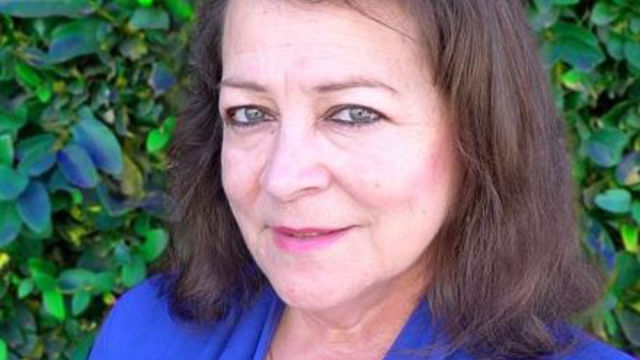
Barbara Carrasco
The mixed-media artist Barbara Carrasco was born in El Paso, Texas, in 1955 to Mexican American parents and grew up in the predominantly Mexican American and African American community of Mar Vista Gardens, near Culver City, California. She received her associate of arts degree in English from West Los Angeles College before transferring to the University of California, Los Angeles (BFA 1978). She was the first woman editor of the UCLA newspaper La Gente. At age nineteen Carrasco met César Chávez, leader of the United Farm Workers of America (UFW), after which she began a long association with the organization. She designed and created flyers and banners for the UFW. In 1981 Carrasco was commissioned by the Community Redevelopment Agency to create a sixteen-by-eighty-foot portable mural titled LA History: A Mexican Perspective. The mural elicited controversy over the use of images referencing the internment of Japanese and Japanese American people in the western United States during World War II, which Carrasco had decided to include after talking to members of the Little Tokyo community in Los Angeles, who agreed to the use of the images. The mural, which depicted fifty-one events, was displayed only once, at Union Station in downtown Los Angeles. Another incident that incited controversy around her art transpired with her animation titled Pesticides! (1989) for the Spectacolor light board in Times Square, New York. This computer artwork—a political piece depicting the exposure to toxic pesticides of farm workers and their families— had two scenes that were censored by the president of Spectacolor and that Carrasco replaced with, arguably, two more political images. She also studied at the California Institute of the Arts (MFA 1991).
The death of Chávez in 1993 was particularly devastating for Carrasco, for she considered him not just a friend and a leader but a father figure (Carrasco's father died of a heart attack when she was twelve). Her commitment to the Chicano civil rights movement and its art has not waned. In 1999 she created one of her most iconic prints, Dolores, depicting, in a pop art aesthetic, the formidable activist Dolores Huerta. Carrasco is a founding member and board member of the Dolores Huerta Foundation. Students and scholars of her work can find her original mural sketches and drawings in the Permanent Collection of Works on Paper at the Library of Congress in Washington, DC; her oral history is archived by the Smithsonian Archives of American Art and UCLA Chicano Studies Research Center; and a permanent collection of her papers has been established and archived at Stanford University's Special Collections.
—Marcela Guerrero
Selected Exhibitions
1987 Rest in…Twelve Pieces, Border Grill, Los Angeles
1988 Here Lies…Here Lies, B-1 Gallery, Santa Monica
1990–93 Chicano Art: Resistance and Affirmation, University of California, Los Angeles, Wight Art Gallery (traveled)
2008 Barbara Carrasco: A Brush with Life, Vincent Price Art Museum, Monterey Park, CA
2008 Face It!, Patricia Correia Gallery, Santa Monica
Selected Bibliography
Barbara Carrasco: Mid-career Survey Exhibition. Monterey Park, CA: Vincent Price Gallery, 2008.
Gamboa, Harry, Jr. Barbara Carrasco. San Francisco: Galería de la Raza, 1989.
Goldman, Shifra M. Tradition and Transformation: Chicana/o Art from the 1970s through the 1990s. Los Angeles: UCLA Chicano Studies Research Center, 2015.
Griswold del Castillo, Richard, Teresa McKenna, and Yvonne Yarbro-Bejarano, eds. Chicano Art: Resistance and Affirmation, 1965–1985. Los Angeles: Wight Art Gallery, University of California, 1991.
Oral history interview with Barbara Carrasco, conducted by Jeffrey Rangel, April 13–26, 1999. Archives of American Art, Smithsonian Institution, Washington, DC. https://www.aaa.si.edu/collections/interviews/oral-history-interview-barbara -carrasco-5447.


